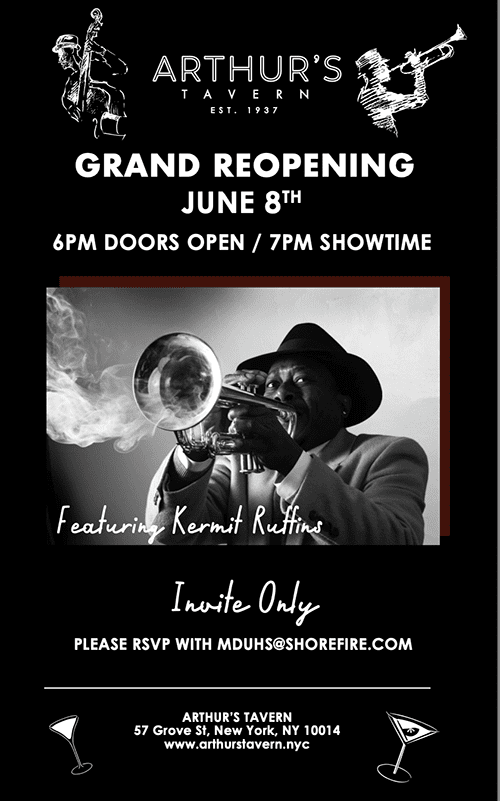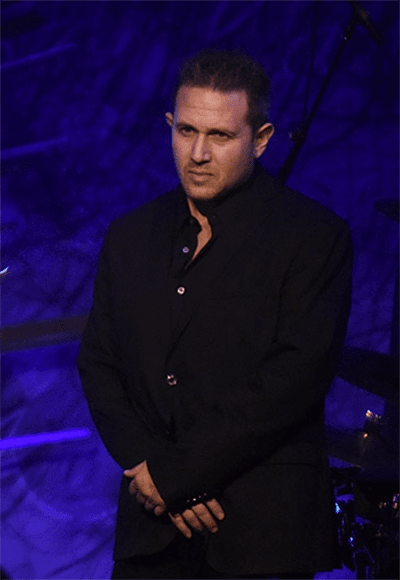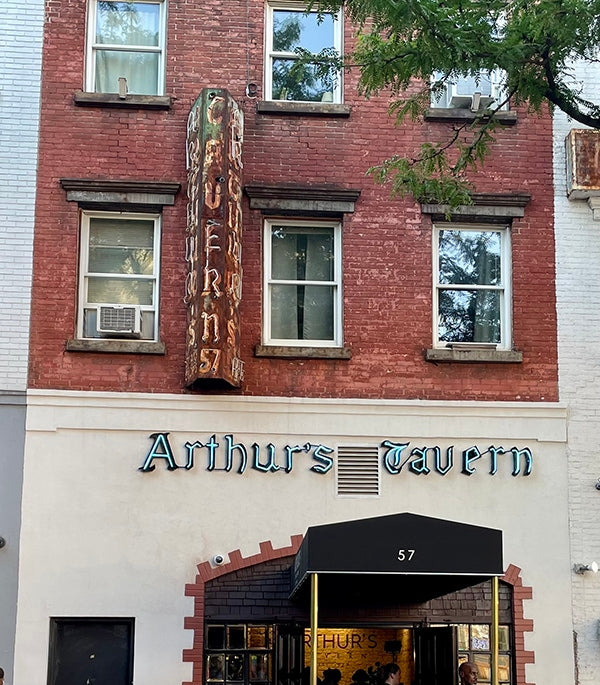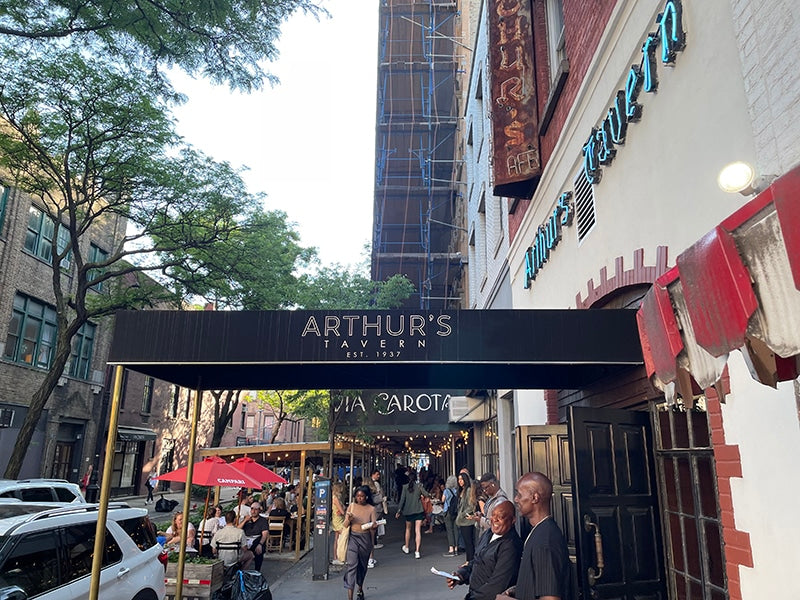Arthur’s Tavern is one of those New York City gems that have always been among the city’s best-kept secrets. It opened in 1937 as a speakeasy just after the end of Prohibition, and since then has remained a tight live music space with remarkable acoustics, and walls that drip with history, stories, and I’m sure quite a bit of great gossip. Arthur’s Tavern was closed for years, which ended a run that made the little jazz joint on the West Village’s Grove Street home to countless performances by Charlie Parker, among others, who considered Arthur’s his home court. It also was well-known for hosting artists like Mabel Godwin, Al Bundy, and Johnny Parker, and would later become the favorite place for modern-day musicians like Roy Hargrove to lay down some of their most memorable performances.
The venue was acquired by the Blue Note Entertainment Group, an outfit perfectly suited to bringing this wonderful spot to a new kind of glory. The updates they have made give the room just the right amount of sparkle, but leave its rustic roots intact. On June 8, 2022, the Blue Note Entertainment Group hosted a grand reopening/renovation reveal. New Orleans trumpeter Kermit Ruffins and his band The Barbeque Swingers ushered in the joint’s new era. As they made their way across an impromptu set of songs the room became filled with jump classics, Ruffins originals, and some songs that tipped the hat to Kermit’s idol, Louis Armstrong. The mood was festive, the vibe was light-hearted, and the sound just blistered with rollicking piano parts from Yoshitaka “Z2” Tsuji, dazzling drum fills from Jerry Anderson, deep pocket bass lines by Kevin Morris, and of course, rocketing horn howls and vocal hoots from Mr. Ruffins. It was the perfect launchpad for the reopening, and that night, Arthur’s left a mark on everyone.

We had the opportunity to speak later with Blue Note Entertainment Group Chief Operating Officer Tsion Bensusan about why Arthur’s Tavern became a corporate priority, why its legacy matters, and what he sees ahead for this historic musical haunt.
Ray Chelstowski: What prompted the decision to invest in restoring Arthur’s Tavern, and why now?
Tsion Bensusan: The building was bought in the late 1980s by my father, and he kept it running as he wanted to preserve Arthur’s Tavern because it’s been a historic venue in the neighborhood for many years. When he purchased it, it was done [with the intention] to keep Arthur’s Tavern alive. But we weren’t operating it, we gave it to someone to operate. During COVID, the operator disappeared, and we saw that it wasn’t being kept in good condition; things were falling apart and not being fixed. We decided to take it upon ourselves to operate it, bring it back to life, and bring back some of the old musicians that have been performing there for many years.

Tsion Bensusan.
RC: When you were looking to restore the room, what guided the design, and were there any “off the table” items that wouldn’t be subject to discussion?
TB: We had the [interior] designer help us navigate through the [renovation]. When we were doing some demolition we discovered many old elements to Arthur’s that date back to the early 1940s and 1950s. So, we decided to either restore those elements or bring back some of the color elements that were there prior. We found the old ceiling, we found some old color schemes of what the place used to look like, and other hidden things that we discovered by knocking down a wall or two. We tried to bring back as many old elements as we could to preserve the history.
When we were repairing the bathrooms, we found a room. That room was an old storage room and it was covered with a sheetrock wall and there were even weeds growing in it. Inside that room was old glassware and flatware from the early ’40s. We didn’t [make the room part of the renovation] because of some piping issues, but we will in the near future figure out a way to expose it and share that with the public.
RC: When the company was considering buying the location, what drove that decision?
TB: With COVID, and [with] so many other [venues] closing, we wanted to do the opposite. We wanted to have a brand that preserves history. COVID forced a lot of places that have been around for such a long time to close, and it just wasn’t worth it to them to reopen, and we didn’t want that to happen to Arthur’s. We wanted to preserve it and bring it back because it’s a nice piece of history in New York.
RC: Rooms like Arthur’s have great stories to tell, and in speaking with Kermit we agreed that there are definitely “musical ghosts” present throughout 57 Grove Street. What’s the best story you’ve been told about the tavern?

Bassist Kevin Morris. Courtesy of Cathy Chelstowski.
TB: Arthur’s was home to Charlie Parker in the later period of his life. He used to like performing there, and Roy Hargrove was also frequent. Then you have some local acts like the Grove Street Stompers that have had one of New York City’s longest residencies.
Supposedly there’s a hidden passageway from Arthur’s to Marie’s Crisis Café and to the other townhouse next to it. We tried to look for it and we couldn’t find it but maybe we just didn’t break apart everything.
RC: Kermit Ruffins and his band were the perfect ensemble to reintroduce this great venue. How did securing him for this important night come about, and why was he the right person to first take that stage after the closure?
TB: Kermit has that old charm; he has an old school style that perfectly fits the venue. When we asked him to open it he jumped at the opportunity. He was also influenced by many old musicians from the ’40s and ’50s era. It just felt right. He’s a new generation preserving the old.
RC: Does Blue Note Entertainment Group have any plans to do something similar with like-sized historic clubs across the United States?
TB: Yeah, we’ve been talking about that. We’ve been looking into other old establishments that are also on their last legs. Maybe assisting them and helping them out or purchasing them in order to keep them alive.
RC: In the end, what does success look like for Arthur’s Tavern?
TB: To be there for another 85 years.

Courtesy of Cathy Chelstowski.
Header image courtesy of Cathy Chelstowski.



